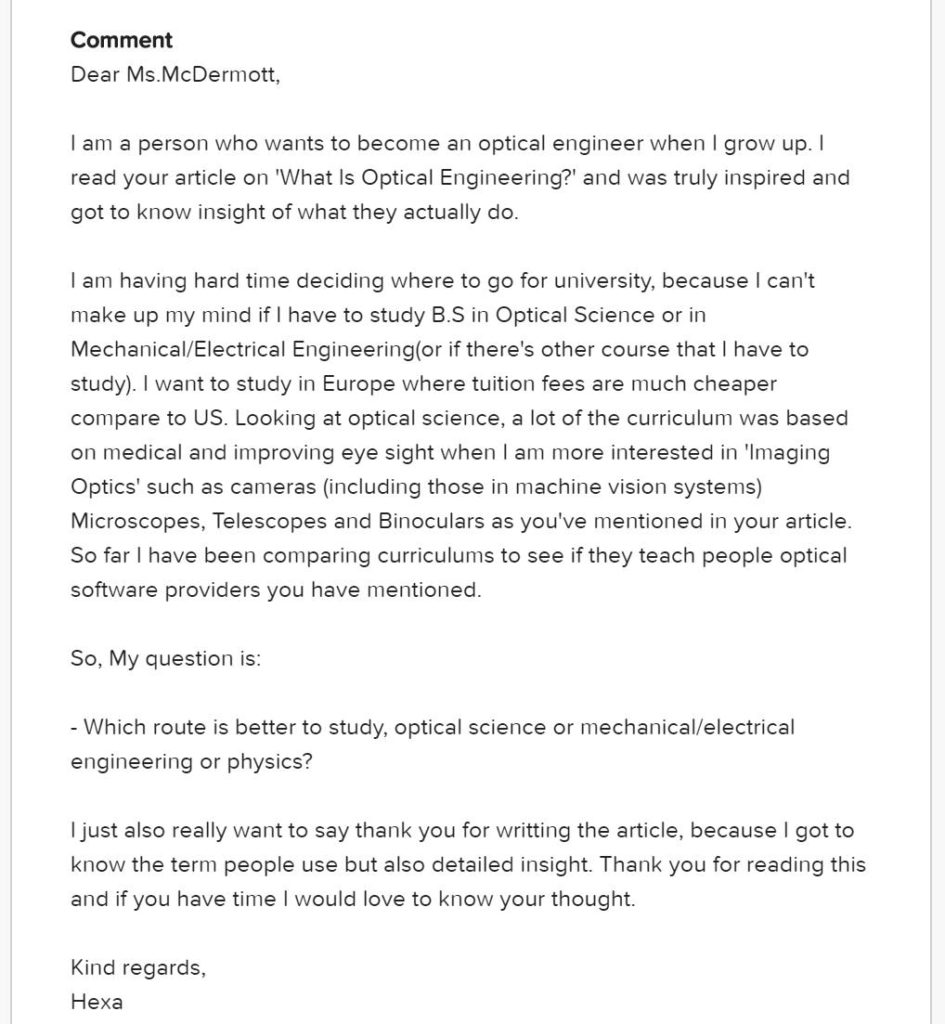


Simple breakdown of LED Datasheet terms important for LED lighting design.
To schedule a free consultation to discuss 🗣️👩💻👨💻🧑💻 what we can do in a contract to optimize YOUR non-imaging 💡 optical system,
• color: warm white, cool white, neutral white
• color temperature aka CCT aka K aka Kelvin
• flux values aka lumens
• Why don’t you get lumens at 85° for all vendors?
• test current and forward voltage
• efficiency in lumens/Watt
• cautions about sorting LEDs by efficiency
• CRI (color rendering index) 🌈
• metamerism 🧡❤️♥️/♥️♥️♥️
• more on CRI 🌈and when it’s important for machine vision
• maximum current ⚡️rating and how NOT to use it
•Viewing Angle – is it what you assumed it is⁉️⁉️ Probably not! Plus —
•Beam Angle 📐
•FWHM
•Lambertian Distributions
•flux 🚿
•forward voltage ⚡️
•forward current
•maximum temperature 🤒
•Binning! 🪣🪣🪣🪣🪣
•Flux and chromaticity 🌈 bins, and
•Do white LEDs emit UV light? 🤔
•Do you know LEDs warm up 🔥when they’re on?
•Do you know what happens 🙀when they warm up?
•Why size matters 🐘
•Most important data for optical engineers that’s not on the datasheet! 😲 — ray files !

We got enough questions on optical engineering education that we decided to do a whole thing on it. And here it is!
Last year, our Director of Optical Engineering, Erin M. McDermott, published an article and video on SolidSmack about the basics of what optical engineering is (since so many don’t know).

Since then we’ve been getting pinged, not just by the intended audience of other hardware engineering disciplines, but by students who want to jump into optics and photonics careers.
The latest is a student named Jung-Mundi, who on LinkedIn goes by Hexa Koo. (Huge apologies for both the pronunciation of these names and the ignorance about this individual’s gender!) Jung-Mundi gave permission to publish his/her messages to me, which follows:

For Erin’s full reply, you can watch this video below:
No matter what specialties you’re interested in, these tips apply to anyone interested in an engineering career.
Jung-Mundi had some specific questions about optics education. He/she noted that most of the curricula she came across was biology/eyeball focused, but these weren’t the types of classes she was interested in. She wanted to play with the equipment that had nothing to do with eye health.
We’ll post Jung-Mundi’s question on the optical engineering forum at “ELE Optics Community” found here: https://community.eleoptics.com/
If you have other tips and feedback for this student – or other students interested in optics and photonics in general – we’d love to hear from you! This is especially so if you have some Europe-focused insight. Feel free to comment here, on the ELE Optics Community forum, or on the LinkedIn post.
And be sure to check out the other stuff offered at the ELE Optics Community page! There is the opportunity to ask your own questions of other optics professionals, and an excellent podcast featuring the experiences of other optics pros. That’s some niche stuff right there.
Got other questions that you’d like answered in laymen’s terms? Drop us a line on the Contact Form and we’ll be happy to help you out!
Stray light is a problem that pops up in all sorts of optical systems. This is any light that goes where you don’t want it to.
This could cause glare in illumination systems, or it can degrade image quality in imaging systems. Stray laser light can cause some serious damage depending on how powerful the laser is! In automotive lighting, stray light can cause headlamps to fail government inspections. In sensor systems, sometimes stray light can come from something totally outside the optical system you design — like ambient light coming through a window.
Optical simulations can be used to figure out where offending stray light rays come from and bounce to. Simulations can also be used to figure out the best fix for stray light issues — trying out different solutions before anything is even prototyped.
Specular is just a fancy way of saying shiny. It means a surface is not rough, but smooth and reflective like a mirror.
A higher level description is that the light that hits a specular surface doesn’t reflect in a bunch of directions; light bounces off a surface (reflected ray) at the same angle as it hits the surface (incident angle). Of course, perfectly specular surfaces don’t typically exist in reality . . . but they’re often fine approximations in simulations (depending on application).
Reflex is the term used to describe the optical structures on those plastic, colored reflectors you see on cars and bicycles. Yeah, that has a name! And you know it now.
As mentioned under “photometric” (above), there are 2 different ways of measuring light. One is how a human observer sees light, and the other is how a machine would detect light if it wasn’t messed with. Radiometric deals with the measurements of light you take where you don’t care how a human would see it.
So, for example, any sort of infrared (IR) measurements are going to be radiometric, because humans can’t see IR light!
Most sensors, high-powered lasers where you’re melting metal, any other wavelengths outside the visible spectrum are usually measured with radiometric units. For those, you’ll be using radiant flux in Watts and radiant intensity in Watts per steradian.
Polarization is a way of describing how light travels through space as a wave. Light waves can travel in circles or lines, to the right or to the left . . . Or, light can be composed of a bunch of different kinds of polarization, in which case the light is said to be “unpolarized” or “partially polarized”.
Polarizing filters or polarizers can be put in a light path to only let light of a specific polarization through. The classic example of these filters is polarized sunglasses that block out glare from sun that bounces off shiny objects. The glare from sunlight that bounces off would be mostly a different polarization than what the sunglasses let pass through to your eyes.
